Overwatch has been out for a couple months now, and the honeymoon period is over. Competitive mode is a divisive subject, and game balance has been a rollercoaster. Meanwhile, there’s been controversy around things like hero skins and, er, porn. I quizzed game director Jeff Kaplan about all of it.
Kotaku: Competitive has been out for a little bit now. You guys have made some changes to it, like most recently, hero stacking, the new one hero limit. Why’d you decide to do that despite being so against it initially?
Jeff Kaplan: So far in the PTR, the response that we’ve gotten has been really positive. Not only from the PTR but just the players who read about it and have been talking about it. A lot of them were thanking us for listening and saying, “Wow, you’re actually listening to the community feedback and we appreciate it on this one.” We just want to make sure that the rest of the time on the PTR is not a honeymoon period, that people are still feeling that one hero limit is the right way to go.
I like to leave that door open for iteration and improvement and sort of letting people know that sometimes we’re going to make decisions that are awesome and sometimes we’re going to make decisions that make the game less fun. If we do make the game less fun, we need to be really responsive and correct our course of action. I like to leave the door open, but my belief is it’s the right choice and until proven otherwise, I think that’s the way Competitive play is going to work.
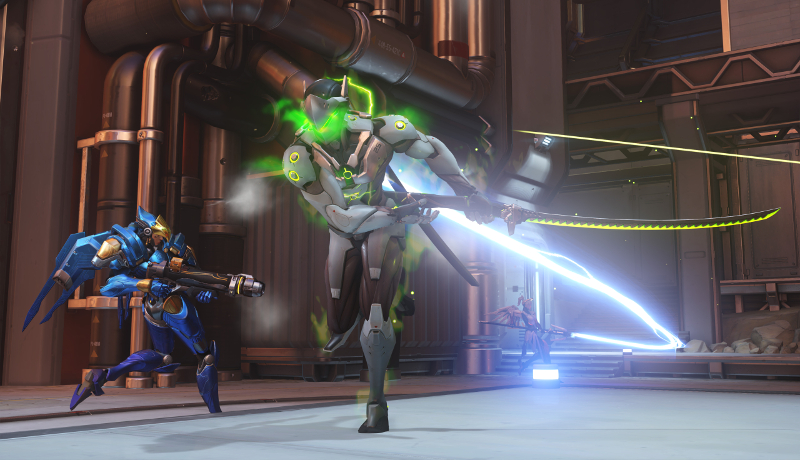
Kotaku: It strikes me as illustrative of the gulf between Quick Play and Competitive. There’s kind of a weird tension the way that Overwatch works and the way that ranking systems in video games work. I wrote an article about it, actually, but it seems like Competitive Mode as it exists now intrinsically emphasises the individual, while Overwatch is a game about the team. What do you plan to do about that?
Jeff Kaplan: Actually I read that article, and I sent the link around to some of the other designers here because a lot of us were in agreement with what you were saying in that article.
It’s interesting. To give you a little bit of history, early on, before the game was even announced, we had a design for Competitive Play that was very, very different than what is out there now. Our earliest design for Competitive Play was 6v6 teams only. That’s all we were going to allow.
In so many ways, that felt more Overwatch, and it also felt more competitive to us. Think about all the issues that exist with leavers and matchmaking in terms of like group vs. group matchmaking or not and all these things. It all goes away when it’s team-based. Also, instead of having to worry about individual performance and individual skill ratings, the teams would each have a skill rating. It would be very clear. This is how this group of people performs because in a lot of ways, players in a video game, it’s almost more chemistry than anything else.
That team vs. team Competitive is what we felt we could make the most true and honest system. The one that would both embrace what the game was already about, but also be the most highly competitive. You could say, “OK. It’s a team game and we’re measuring the team.” Take the World Series for example. It’s not like an individual pitcher on the Dodgers wins the World Series. It’s a team effort. The team loses it. It doesn’t matter if the Yankees had a better first baseman or not.
Kotaku: There are no unlockable golden bats in baseball, unfortunately.
Jeff Kaplan: So that was our original design and man, the community hated it. We hadn’t even implemented it. We just told them about it. That was some of the most negative feedback we got. “Hey, I absolutely need to be able to play as a solo player. That’s more important than anything.”
We were hearing it loud and clear from people. That’s why we steered the system in the direction we did. The first beta version of the system that we tried was more progression-based which we thought would feel better to more people.
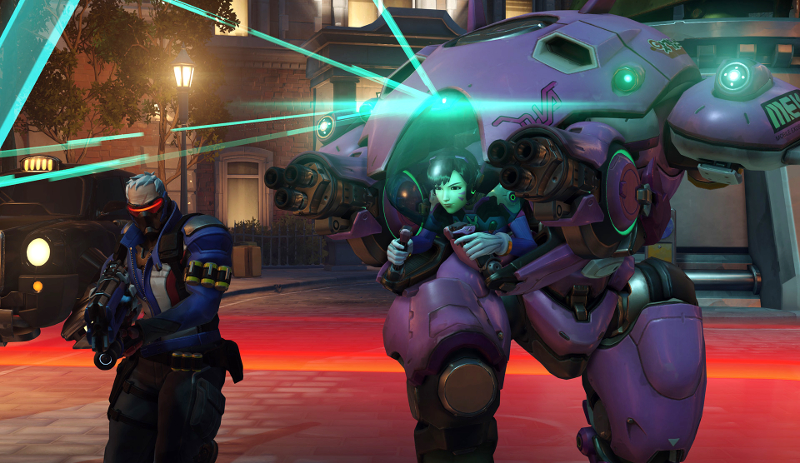
Kotaku: Right, you ended up with a situation where it was like people could just invest enough time, and they could achieve a high rank. People felt like it emphasised persistence over skill.
Jeff Kaplan: To be honest, I don’t feel like the community ever gave it a fair shot because the way that system was designed was in the early ranks, it was mostly time investment based, but in the later ranks, you were going to get to a skill based system. You really needed to be winning a high percentage of your games to move forward. Then, you got into the Heroic Rank which was never implemented that was like a true stack ranking of all the players.
I actually feel like that system wasn’t as bad as the community painted it out to be, but we were hearing them loud and clear. They’re like, “We just want this to be skill based and I want to be able to compare my skill against one other person,” but it’s a very tricky problem to solve in a team based game. It’s really, really hard.
Kotaku: I mean, do you think there’s any way for you guys to incorporate elements of that previous team-based system into what you have now? Or, more removed from that, have you considered creating a separate team-based competitive mode?
Jeff Kaplan: I think a separate mode could be interesting. I don’t think we’re there yet. The problem is we’ve seen this from other games including games of our own. If you have any system that doesn’t require a full team that’s competing with a system that does require a full team, very few people will play the team based version. You end up doing a lot of work that theoretically sounds really cool, but you’re hitting such a small percentage of the player base.
I do think for season 2, what we’re talking about right now, we have a bunch of cool changes I think we’re going to make. We’ve talked about tons of basic stuff like getting rid of the coin flip and adding time bank to the payload stuff, but we’re really talking a lot about skill rating and trying to recalibrate how players think about skill rating for season 2 meaning right now. We feel like a lot of the things we did in the UI and the numbers that we chose make players think if skill rating as a levelling system.
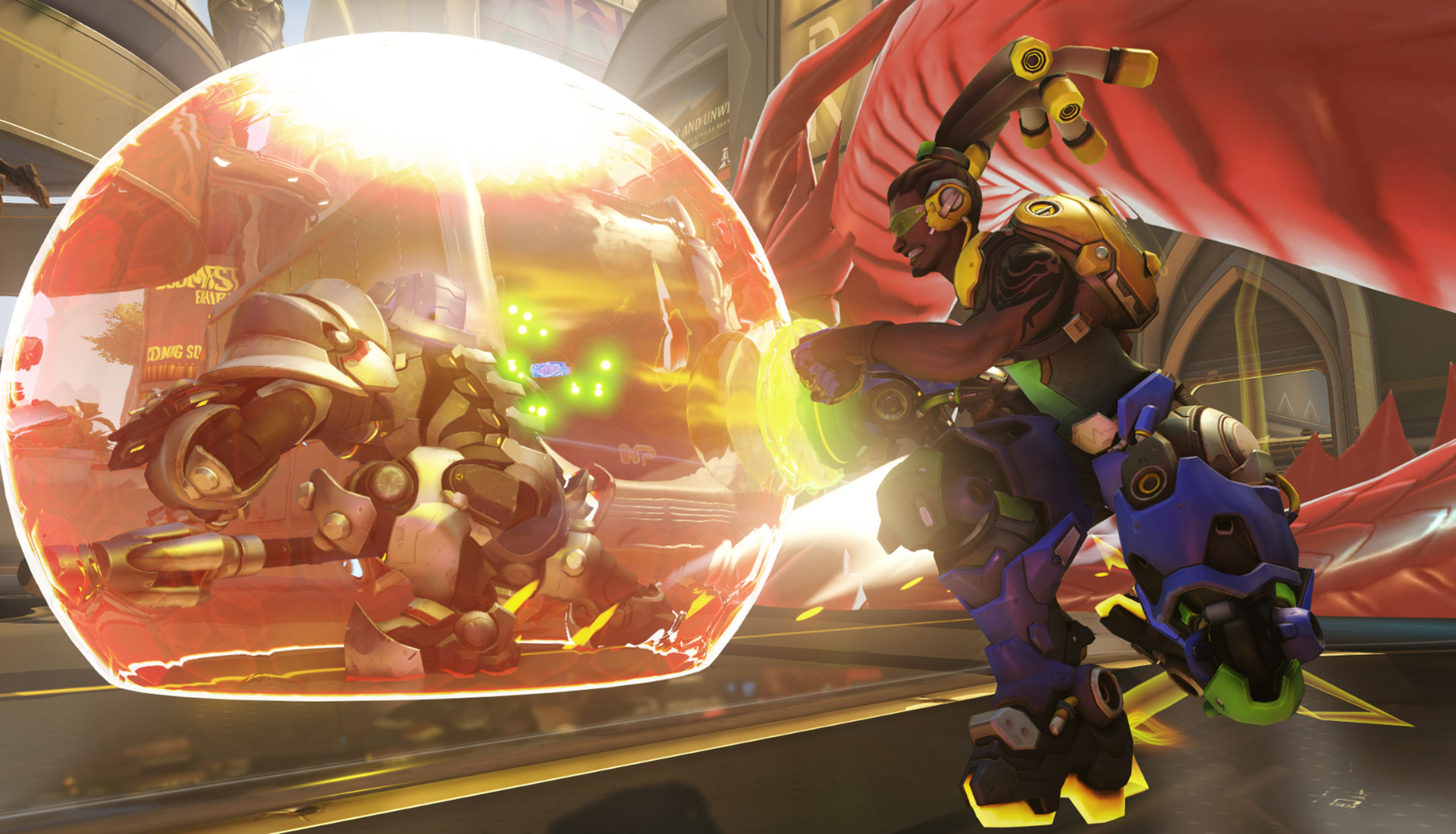
Kotaku: Right, and it’s not meant to be a progression. It’s a measuring stick.
Jeff Kaplan: Yeah totally, so we’re working a lot. We’re coming up with a lot of ideas. I don’t have anything concrete to share with you right now because we’re kind of in the exploration mode, but we’re working on systems to try to get players to think about, “Actually, my skill rating is just sort of a calibration and it’s very natural that it’s going up and down. I’m not a 62 player and therefore I feel wronged when you call me a 61. I’m focused on something that’s a little bit different than that skill rating and I understand that skill rating going up and down is very natural.”
We realised a mistake I think we made was picking the percentile based system. Ours goes 1 through 100. I don’t know about you, but I grew up in North America and anything less than an 80 was not good. I didn’t want to get that in school if it was less than an 80. I really wanted scores in the 90’s and if I was in the 60’s, I maybe wasn’t even passing. Whereas in our system, now that the dust as settled, I’ve realised actually a player with a 60 skill rating is a super badass in our system.
Obviously, there’s some bugs and some issues with leavers that we’ve been working on. We’re really getting a handle on those now. We’re fixing those up, but once we really look at our skill rating non-emotionally and we look at the distribution curve of where players are at, it’s exactly how we modelled it to be. It’s this beautiful bell curve.
When I look at the top 100 players in Overwatch, if you’ve been following the pro scene at all, the top 100 players are the players that I know and I would expect to be in the top 100. TviQ is one of the highest rated players right now in our system, and if you’ve watched any of the pro teams and ask anybody in the pro teams, well TviQ is probably one of the best players in the world, as is Surefour. Those guys are sitting at the top of our system so in that regard, I think our system actually did a really great job of identifying who the great players were and it wasn’t just based on time investment.
Kotaku: Yeah, now it’s just a matter of kind of massaging that system into something that’s a bit more indicative of its actual nature. That makes sense.
Jeff Kaplan: Yeah, and making players feel better about it. I think that’s part of it.
Kotaku: Right, making it less disheartening.
Jeff Kaplan: Yeah, like I’m not TviQ so I’m not going to have an 86 skill rating so make me feel good about my skill rating. That’s what we’re working on now, making players feel better about where they’re at.
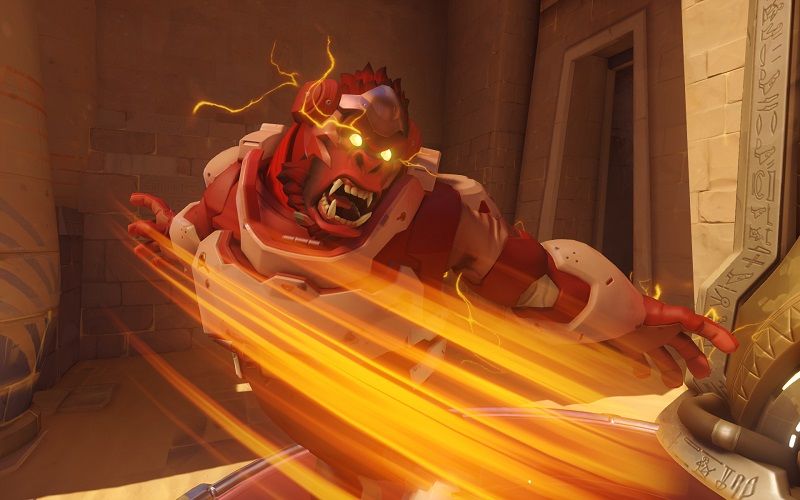
Kotaku: So the other side of that coin is I think because of some of the less positive emotions that competitive engenders, I’ve seen complaints about toxicity. How do you plan to confront that issue in Competitive?
Jeff Kaplan: It’s a big concern of ours. I think, for the most part, the Overwatch community has been fantastic. But [toxicity] is not just in Competitive Play. I think as the game ages a little bit, people’s dark sides tend to come out a little bit more and definitely when you put the competitive stakes in there, it raises a little bit.
We’ve always prioritised our social systems as being high priority systems that we need to iterate and work on. Then, there are some systems that under the hood we’ve been tweaking as well. A lot of this is very black box and for a reason. We don’t talk about it because if we talk about it too much, players can exploit behaviour, so that’s why I’m not going to give too much detail about it.
But, for example, the report function, the way that works. Since Competitive has been live, we’ve been doing some under the hood tuning and tweaking on that feature to be more aggressive about handling toxic behaviour. I wish there was more that was visible to players in a way that wouldn’t allow for other negative players to exploit it.
What I always try to encourage players is if somebody is acting out and being toxic in a game of yours, please use that report function because it very much has consequence on the people on the receiving end. One of the things Blizzard prizes itself in is staffing a 24-hour customer support group who we think are some of the best customer support reps in the world. It’s something that we really care about so we’re really looking at that stuff and we’re taking aggressive action.
We don’t notify you back, and I think that’s a bummer and maybe something that we can work on in the future. You don’t get a lot of feedback of like, OK let’s say Steven was being a jerk to us. You and I are grouped and Steven’s being a jerk to us and we report him. Right now, it just kind of feels like that goes into the void, but it doesn’t and that’s something that we’ve tweaked on and we’ve improved upon.
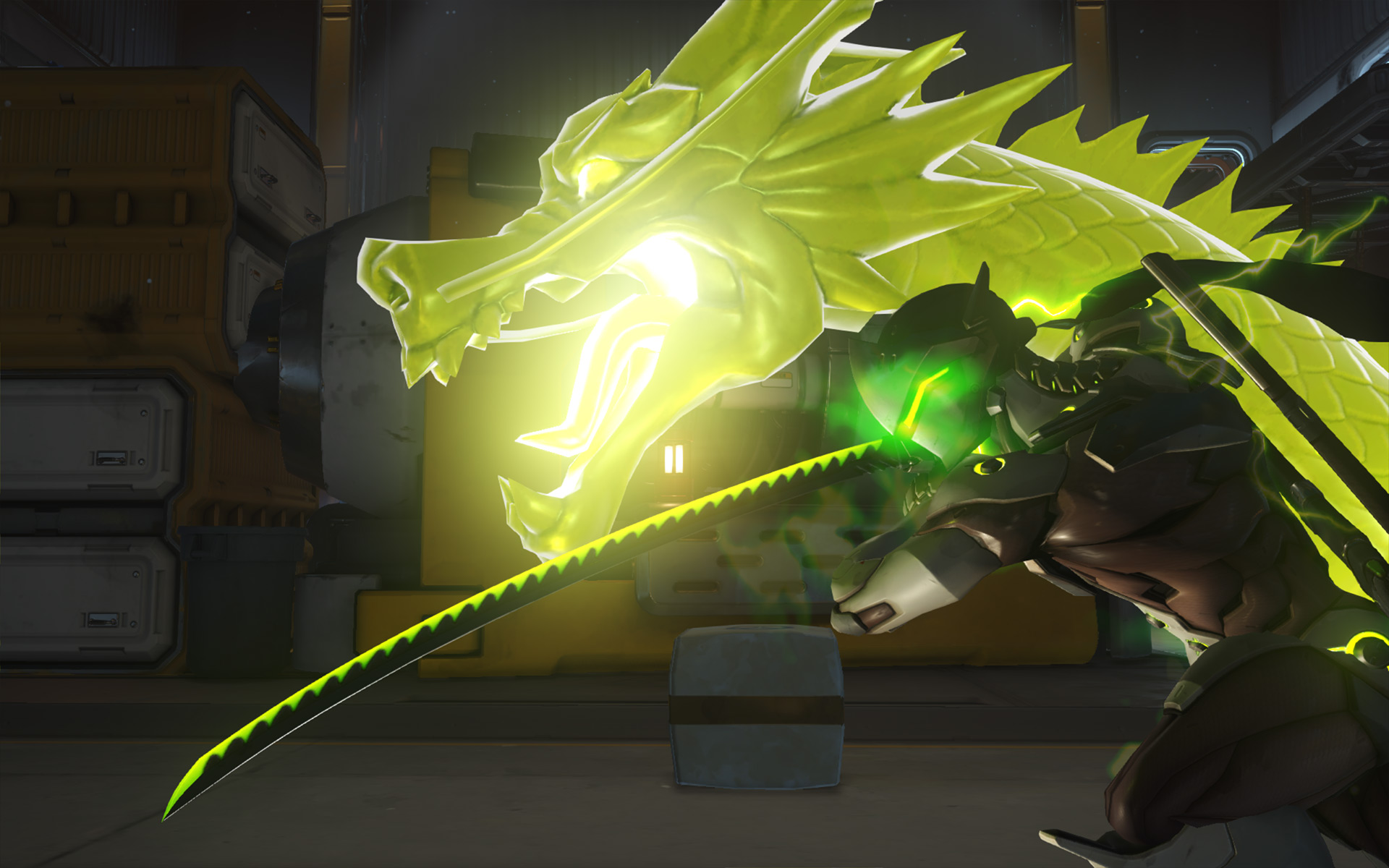
The other thing that we’re talking about and we’re kind of exploring options on right now, is finding ways to help solo queue players who have good experiences with players that they like, making it easier for them to either friend other players or just enter a group.
We’re brainstorming systems right now where you’re sitting at the end of the match and you’re like, “Hey, that Steven guy and that Nathan guy, they were actually pretty cool. Fuck, I wish I could just play with them more so I’m just going to click this button then if they do the same thing, then we can all just keep playing matches for the night.” It’s not some permanent friend thing. We’re not sharing real ID’s or anything like that. We’re just saying, “Hey, I like that group who I happened to be put with. How can I play more with those guys because they seem nice or confident or whatever.”
That’s kind of solving the problem on the other end of toxicity is when you have those positive experiences, what can we do to solidify those into either short term relationships or long term relationships?
Kotaku: Overwatch‘s hitboxes have been brought in a little bit to be more aligned with the character models. Why were they wider initially, and why did you guys decide to change them now?
Jeff Kaplan: Our goal has always been to make shooting feel great in the game. A lot of times what a lot of players will do is they will kind of treat the game as a realism simulator. They will put the game through some paces that you would never naturally feel in an actual match of 6v6 Overwatch.
An example is whenever these hitbox videos come out of like, “Oh my God. The hit boxes are terrible in Overwatch. Check out this video.” You’ll usually see somebody like standing still either with a buddy in a custom game or standing still in the training room and then they’re millimetre by millimetre tracking their reticle down until they find a moment where you hit thin air instead of the character’s pixels.
They will be upset at that moment, but you’ve played a lot of Overwatch. You know that like … are there realistically moments in Overwatch where the combat slows down to a crawl and players are adjusting their reticles in such a way? We do it because Overwatch is a fast-paced game, and we want to make shooting feel great.
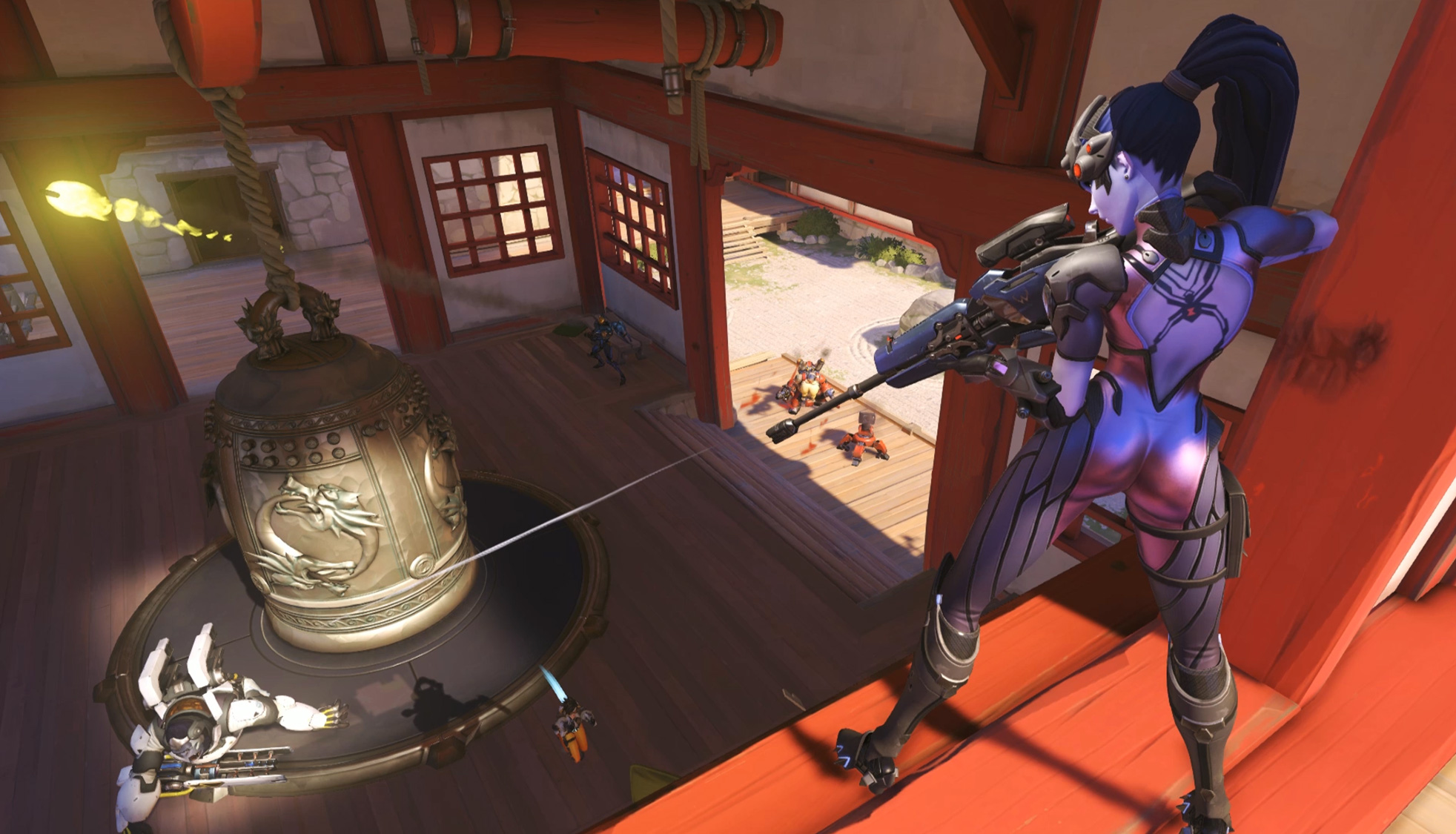
There’s kind of another weird way of looking at the hit box issue. Players will point it out always from a victim’s point of view like, “This is so unfair. It takes the skill out of the game.” Rarely or almost never have I seen a player point out, “Actually, when I play Hanzo, maybe a lot of my shots were landing when I thought I was like that bad arse best bowman in North America. Actually, maybe some of my shots were helped a little bit by this.”
What we did is we kind of went back to the drawing board and we just took a look at, “Is there a way to make shooting feel great while reducing some of those egregious cases?” We didn’t take too much note of those videos of people standing still in the training room. I feel like that’s not really a realistic case. The one that bothered us is somebody posted a video. I think they were Widowmaker standing on a building and a Hanzo arrow had clipped the Widowmaker when she was clearly out of line of sight, like around a corner.
That one really bothered us, and our lead gameplay engineer, Tim Ford, said, “OK, that’s a problem, and I know how to fix it. I’m going to go back to the drawing board on what we’re doing here.” I think a lot of it, our intention was never to make the game feel low skill. I think skill means a tremendous amount in Overwatch, but we’re trying to make a game that feels great to play. That doesn’t always mean that we’re going to perfectly simulate real world, pixel perfect physics and hit reactions all the time. Sometimes it means we take artistic liberties.
Kotaku: You’ve said you’re working on four new levels right now. What sort of lessons have you learned from Overwatch‘s launch maps, and how are you applying those lessons to new maps?
Jeff Kaplan: Well, we’ve learned a ton and we sort of think of it on a lot of different levels. There’s kind of the art level and the science level to making maps. The science level is we’ve learned that we can do very little to a map and affect the outcome of the map in huge ways.
The example I use is in beta, we had a problem with Volskaya Industries where it had a skewed attacker win raise. Attackers were winning 60% of the time. We shoot for 50/50 win rate on our maps, but if it’s 48/52, we feel like that’s pretty much close enough, and the next week, it might end up 48/52 the other way. When we start seeing them skew into the 60/40 range, we feel like, “OK, we need to do some tweaks to bring this map in.” Also, the players perception was like, “Oh my God, Volskaya’s always won by the attackers,” so we actually want to make some tweaks to Volskaya.
We talked a lot about big level design changes we wanted to do, and we did an experiment internally and it was super successful so we put it live. It was actually a really small thing. We moved the attacker spawn points back by like maybe 10 meters in the library. That swung the win rate to the opposite direction to where defenders were winning, I think it was like, 53% of the time afterwards which was a huge swing to swing. They were at like a 40% win rate, defenders, all the way to like a 53% win rate for defenders.
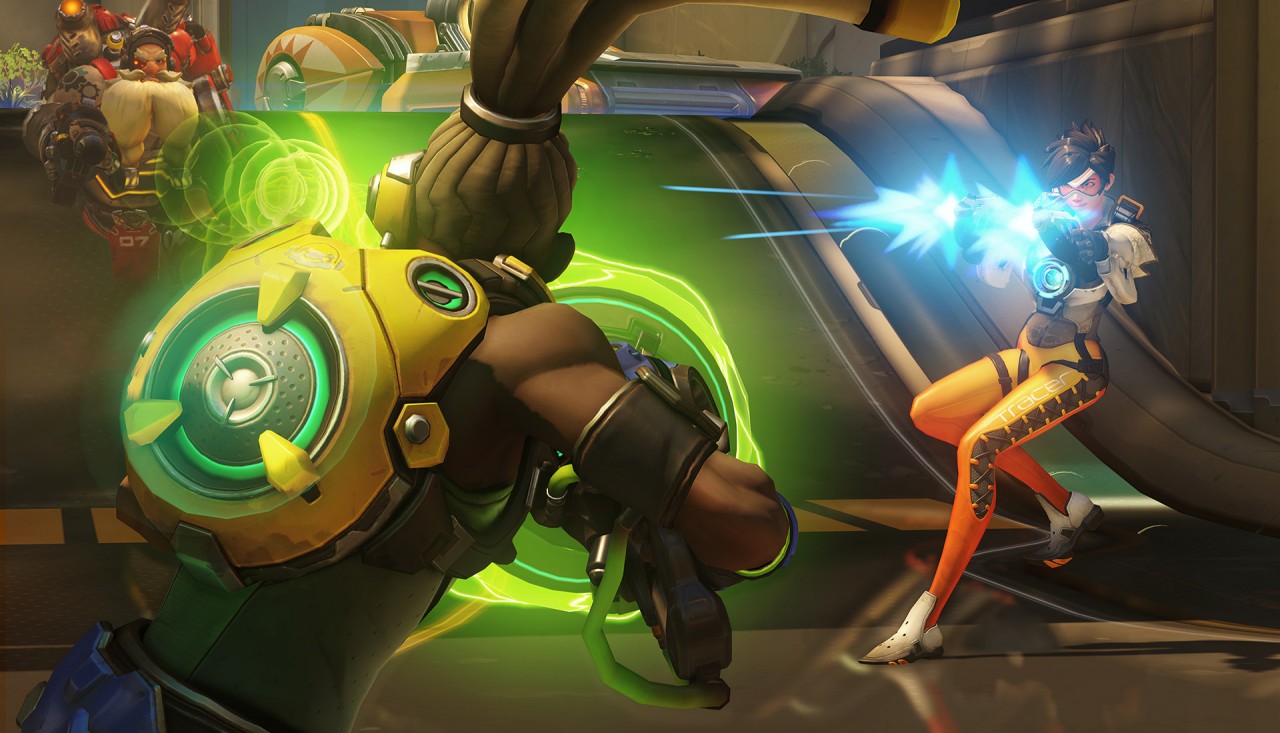
That’s the science part of it of how precise we can make things in maps and what tuning knobs we can leave for ourselves. The art side of it is we want to try new and fun things that make the maps different. We don’t want to just spit out maps that are like, “Oh, this one’s in a different location and has a different colour theme to it and a different time of day,” but it feels just like Gibraltar. It feels just like Dorado. We want to actually find new gameplay elements that really excite players and are fun.
An example was when we added the moving platforms to Dorado or Volskaya was an element that wasn’t there before. With some of our new maps, we’re trying stuff like that. What changes Overwatch? It’s still Overwatch, and it doesn’t suddenly break a bunch of the heroes, but what changes it up in a new, fresh way or what makes this one point on this one new map new and exciting in a way that I haven’t experienced before?
Kotaku: How about new modes? Are we gonna be seeing anything on that front in the near future?
Jeff Kaplan: They have always been a priority. We have those in the pipe. We have a really great tool set so we’re able to prototype new game modes not super easily, but fairly quickly.
The tricky part for us is we’ve always talked about the ultimate priority in Overwatch is the heroes. The game is about the heroes, and we never want a game mode to overshadow the heroes. As soon as somebody starts pitching a game mode where Tracer can’t blink anymore or she’s not allowed to use her recall, that’s where we step away from it and we’re like, “You know, we need the game mode that makes Tracer want to blink and use recall and that everybody thinks that’s cool and not a balance problem and broken.”
The other thing that we like because we’re a 6v6 game, is we like game modes where it focuses the team to work together. We don’t like game modes that come up where it suddenly becomes a lone wolf game and you’re off running by yourself and you don’t really care what you’re team is doing.
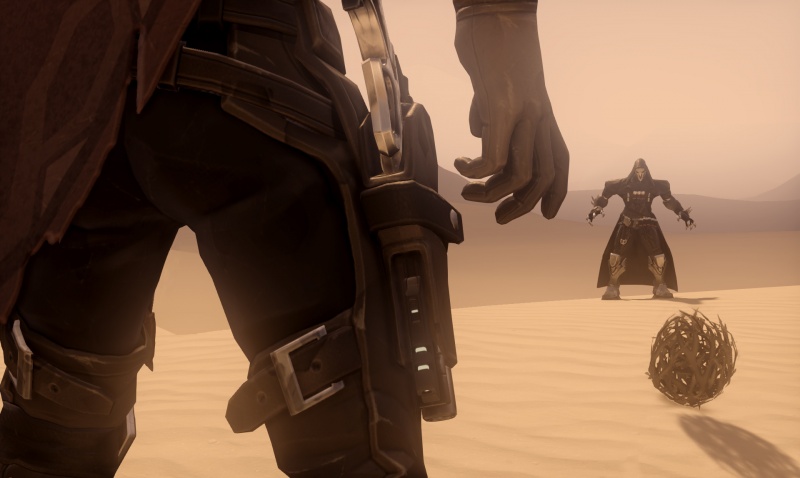
We have a lot of ideas. I think we have some absolutely crazy stuff that’s going to blow people’s minds coming out sooner than people realise. That’s, I think, going to catch people totally out of left field like, “Wow, I wasn’t expecting that from Overwatch.”
I think that will just be fun. That’s just for pure fun sake with a wink and a smile. It’s not, “Hey, this is the new direction of the game.” It’s more of like, “Look, we can have fun with this game in new and different ways,” so that’s my teaser.
Kotaku: That’s reassuring, in a way. I think some people are worried that Competitive has taken the driver’s seat, but it seems like you guys are swinging back in the other direction now.
Jeff Kaplan: This phrase always has a negative connotation to it because most people think it’s not possible, but we love the super competitive side of the game and we love the fun content side of the game too — making fun skins and making wacky brawls. We are going to try our damnedest to have our cake and eat it, too. Until we prove to ourselves otherwise, that we can’t make a really competitive game that also has super fun casual elements to it, we believe that we can make that game.
Kotaku: So we just got Ana, and people are digging her. Do you guys have a planned release frequency of heroes, or is it just when one is ready, you’re going to release that hero? Can we expect more heroes throughout this year and if so, is it going to be every couple months, or is it going to be a little bit less consistent?
Jeff Kaplan: It’s hard to talk about the heroes, because I do believe we’re not a MOBA and we’re not free-to-play. MOBAs have this stigma that they have to have like 80 heroes before people will even think it’s a MOBA. They’re under a lot of pressure. I actually feel bad for the MOBA teams because of that overwhelming pressure of like, “Well, we’ve got to have 80 heroes or whatever.”
I don’t think that’s right for Overwatch. The beauty of our business model is it gives us the design freedom to add heroes to the game when we have a cool hero idea that’s completely unique and completely different from any other hero in the game and also when we think the game can actually support it. We’re not depending on hero releases for revenue. We’re just doing it because it’s cool for the game and fun for the players.
I don’t really know at this point what is the right number of heroes. I feel like we need to come out with a few heroes first to know are we doing it too frequently or are we not doing it frequently enough?
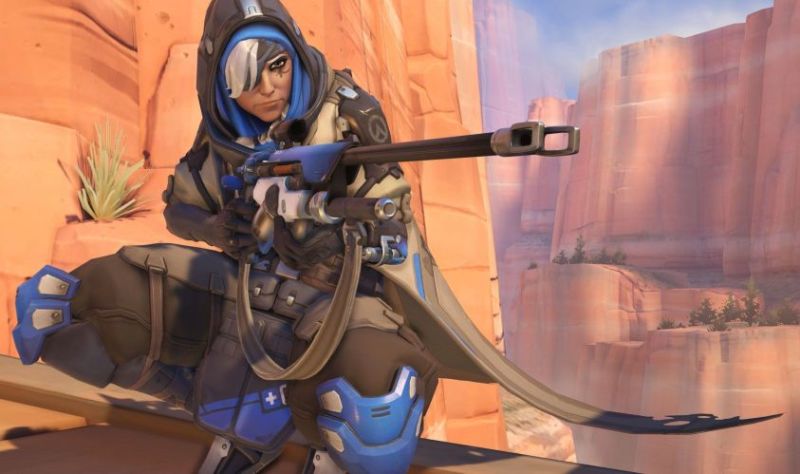
In terms of content updates, my ideal — and this is not like some promise to the players because there’s going to be times when this doesn’t happen — but the dream to me would be that we would have some sort of awesome content or feature coming out each month. That could be a map or a hero or something like Competitive Play, or just like, “Here’s a bunch of new skins,” or, “Here’s some unexpected thing that we came up.”
I’m saying that with a wink towards next month. My dream is that we could do something cool each month that felt not just like a balance patch, but actually felt like a meaningful content or feature delivery each month and somehow the heroes and the maps are kind of cycling as parts of those things in addition to other stuff.
Kotaku: Me being me, I’d be remiss if I didn’t ask you about this: Overwatch porn. What’s your take on it?
Jeff Kaplan: My view of it is we’ve always wanted Overwatch to be a very inclusive universe. That’s how we’ve always talked about it and that inclusivity spans from game play styles, some people like to play support, some people like to play DPS, to genders and body types and different nationalities. That also includes age groups. The game is rated T, so we want players who are in their teens and we also like… I’m 43, and I enjoy the game. We want older players to enjoy the game as well.
The only stated relationship actually that we’ve even ever mentioned in the backstory is between Amelie who is Widowmaker and her husband who was brainwashed and assassinated. That’s the only reference we’ve ever made to a romantic relationship. It’s not that our characters don’t have romantic relationships and don’t have sexual identities or whatever, but the stance that we’ve sort of taken on the team is that we’re not going to talk about that stuff just to pander to the topic that when it comes out for game play or story reasons, that’s the right time for it to come out.
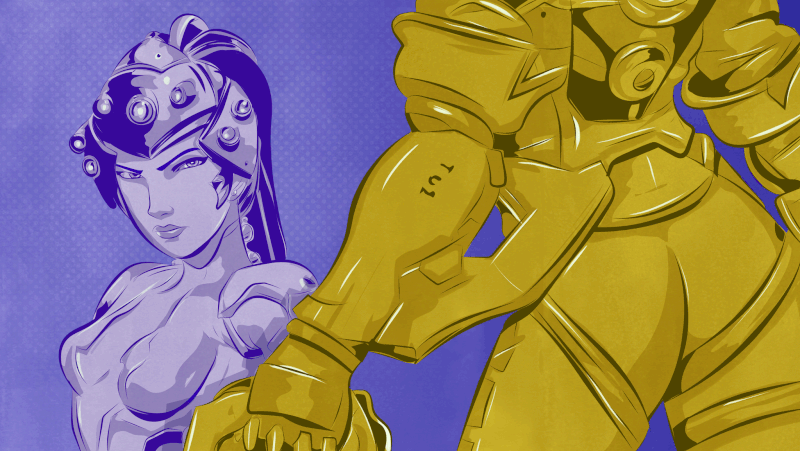
When that crosses into the porn scene, I just feel like that’s an inevitable reality of the internet in 2016, and there’s a lot of freedom of expression that people want to pursue on their own time. Obviously, I have concern as somebody who’s creatively responsible for the franchise. I really hope people know and realise that there are a lot of kids who play the game. Even though the game is rated T, there’s a lot of people who will buy the game for their kids who are younger than teens.
I would just hope that people recognise that we need to be careful because when somebody types in one of our character names into Google, if parents haven’t set up the right parental controls, it’s unfortunate that becomes a really negative experience and we would hate for something like that to happen because we really want Overwatch to feel safe and inclusive and very positive and bright.
Nobody’s trying to step on anybody’s freedom of speech or any of that, like totally love people’s creative expression. I would just say just be mindful that there are a lot of kids who are engaged with the franchise and as long as things are kept sort of away from them, that’s what’s important.
Kotaku: Speaking of your goal of being inclusive, a lot of the skins in the game are really cool and interesting and vibrant, but there are a few, I think, that some people look at and say, “Oh, well that’s kinda disrespectful.” Outfits like Symmetra’s Devi skin and Pharah’s Native American outfit. The latter is especially odd given that Pharah is from Egypt. Those types of skins seem to use these cultures as neat costumes rather than offering them full respect. It strikes me as at odds with the rest of Overwatch, which seems better fleshed-out.
Jeff Kaplan: I think we’re wrestling with a couple things creatively on the project. I think especially since we’re in the early stages of Overwatch being live right now. We’re exploring the boundaries in some ways of what do people respond to in positive ways and what things do we do that are possible missteps that we need to be careful of in the future?
Specifically when you talk about that Pharah skin, it’s really interesting because the first time that we had seen the concept art of it, we were all blown away. We were like, “That is the most beautiful, awesome thing that we’ve ever seen. We absolutely want something like that in our game.” We wrestled with like, “OK, so Pharah is clearly Egyptian and that’s her heritage. That’s her nationality and we want to respect that and we also want to be respectful of Native American culture.” We sort of had this moment of asking ourselves, “Are we being disrespectful in any way?” The Native American parts of it feel awesome and feel like an homage and like, “Hey, isn’t this cool?”
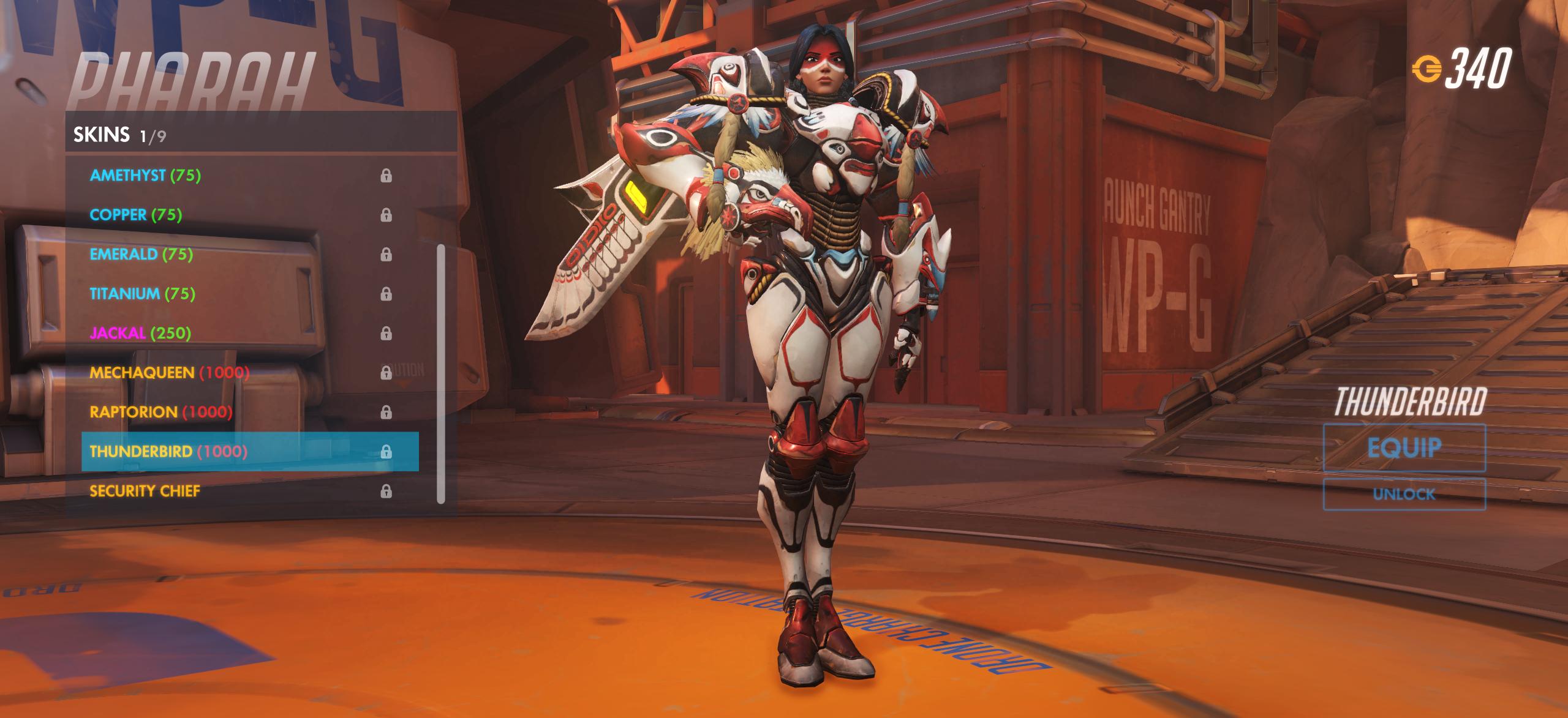
We even wrestled with, “When she’s in that skin, should it just be another character? Should we maybe explore changing who Pharah is and create a Native American character in the skin?” It was difficult for us. We don’t know. Is that one just uncomfortable for some people, or is it actually really cool? Because I think we’ve done a ton to show our admiration and respect towards Egyptian culture. I think we’ve done a ton to show our love for Native American culture, so can people just appreciate that we were inspired and thought those things were cool, or did we cross a line that was inappropriate?
If we did cross a line that’s inappropriate, will we take action to correct it, or figure out what action we should take to correct it. We’re very open-minded. We’re very receptive of feedback and we want to be sensitive.
We’re not about realism. But Overwatch does take place on planet Earth, and we’re trying to get those boundaries of where can we make planet Earth even cooler than it actually is and not offend people?
I’ll give you a random, less controversial example. Big Ben is not placed where we placed it in the King’s Row map, and it definitely doesn’t have a garage with an EMP on a sled underneath it. That’s probably a massive cultural icon for the British people, is that clock tower and yet, we put a garage in the bottom of it. Somehow, that’s OK. We’re constantly trying to explore like, “Is it OK on this one to push in this direction?”
Kotaku: It’s a difficult case because history plays into it. For instance, a lot of people don’t know the significance of Native American headdresses, and so they will wear them at music festivals and stuff like that without understanding that it’s a really huge thing in Native American culture to even have one of those. Big Ben or something like that, it’s more understood. It’s less of a touchy topic. The idea of making different characters is really interesting, though. Is that something you definitely have planned, or are you just exploring the idea for now?
Jeff Kaplan: It’s an idea. I don’t know if we would change Pharah specifically at this point because a lot of players have that skin and are in love with the concept of what it is. That would be a harder decision, but we’ve actually talked about that for future skins. We’ve really gone back and forth on that. With future skins, could we have the skin of a hero that’s actually a different hero. There are good reasons on both sides of it to do it or to not do it.
That one, I think, is still up in the air but it’s a really fun discussion to have because it opens up the creative space and it also allows us to add more characters to the Overwatch universe without necessarily constantly bloating the game play or worrying about homogenizing the game play.
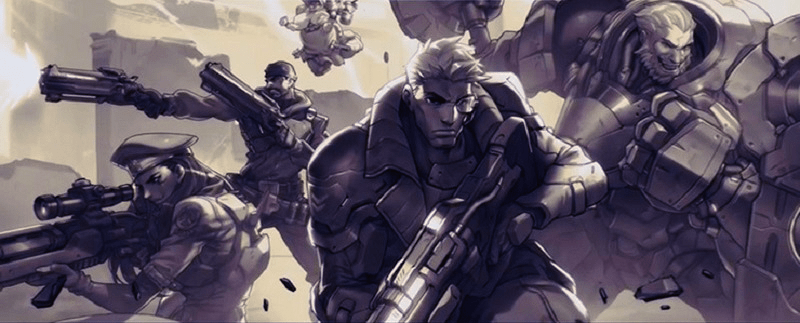
Kotaku: OK final question: who is Sombra?
Jeff Kaplan: [laughs] I think people have learned that she’s a fun character for them to search and to learn more about and that, like the X-Files, the truth is out there. We’ll see what players discover over time.
Kotaku: I think people were expecting the big Ana reveal to be Sombra’s. Was that an intentional bait-and-switch?
Jeff Kaplan: Well, we’ve been teasing Sombra for a very long time. The interesting part was we then put a tease in for Ana in Temple of Anubis. Because people were so hot on the Sombra trail, they assumed that that tease for Ana was actually Sombra. That was the fascinating part of watching how that all played out. Sometimes, people’s obsession with being on the trail gives them a little bit of tunnel vision.
Now, I think they’re seeing in hindsight how they got misdirected because I’ve still seen people comment that one of Ana’s skins, the one with the mask on. They’re like, “Why is she wearing Sombra’s mask?” And they’re like, “There’s that thing in Dorado.” Then, somebody will correct them immediately and say, “It wasn’t in Dorado. It was actually in Egypt,” which makes perfect sense for Ana. We were not trying to get people’s wires crossed between the two characters.
I think that’s up to Sombra, to give you a cheeky answer. Sombra will let people know when she wants more to be known about her. She’s very good at that sort of thing.
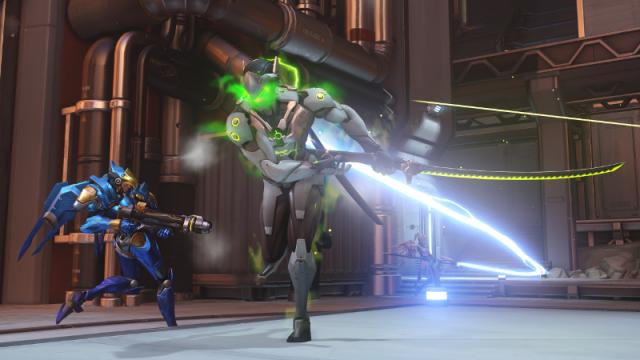
Comments
12 responses to “Overwatch’s Director On Competitive Mode, Controversies And The Future”
hopefully they do something about the rapid deleveling process because nothing says “yay lets keep sinking time into a game that keeps taking away something that was hard-earned just because you and/or the people around are outclassed or having a rough time of it”
I understand its competitive play but I am not less experienced just because I have lost X games in Y days, compared to how many I have won. Especially when its dependant so many external forces beyond your personal control. I dont understand why there need to be deleveling of any sort. I am sorted into my experience bracket, if I win I get rewarded, I go up and get to play with the big boys, if I lose I get to hang out with my fellow newbs for an eternity.
I like to think of it as a race to the bottom and I’m winning.
thanks for the best laugh I have had all day, oh hang on, does that mean I actually have competition for my descent into average-ness. Maybe all this time I was looking at it the wrong way, its competitive mode for both ends of the scale. Mind. Blown.
I’m level 30. So, am I still winning? I know I’m winning among my friends.
I’m still convinced they try to match people so everyone sits as close to a 50/50 win-loss ratio as possible.
The amount of times I’ll get randomly matched with people who we just absolutely annihilate only to then immediately after get matched up against people that absolutely annihilate us, is incredibly questionable to me. It really seems to occur a bit too much to be pure coincidence.
The ranking system currently is absurd anyway. It’s basically designed so that you never move once you’re at your supposed ‘skill level’… I’m still at the same ranking now as I was when I finished my placement games. No matter how well I do as an individual. All the gold medals in the world game after game, all mean absolutely nothing.
Who the hell thought a system with no form of progression was a good idea? The community? I sure don’t recall voting.
I don’t care about being rank 1 or whatever, but in it’s current state there’s simply just no compelling reason for the grand majority of players to even bother with competitive. You get virtually nothing from it.
Interesting that no questions were asked about Overwatch on consoles, and how console players have a different mindset when it comes to games like Overwatch and, more specifically, its competitive mode.
Console players don’t have a familiarity with competitive modes such as this like PC players do, so has there been or will there be any consideration given to this and will there potentially be any changes made to the game on consoles to accommodate?
How about having flashing text on screen stating you were killed by a hard counter. Cause people are still confused why their Winston lost a fight against two Reapers.
Who does deal with reaper? I’ve figured out tactics for others, but not reaper
Anybody with range. McCree can snipe him from a distance and flashbang him up close. Soldier can sprint away and heal up. Pharah can launch herself into the air and use concussion blast if he gets too close. Tracer can easily retreat while doing hit and run tactics. Mei can freeze him. Bastion can tear him down so long as he’s aware he’s coming. Junkrat can trap him and use his mine to clear distance. Widowmaker can snipe him long before he comes and if he teleports near her she has plenty of time to line up a shot. Reinhardt is the only tank with a decent chance if he lures him with his shield and then pins him into a wall.
But communication is the best choice. So when I shout “Reaper ult incoming!” I expect everybody to scatter from the payload.
Yeah, my issue is I always think I have enough distance and then he kills me anyway
Or just watch this https://www.youtube.com/watch?v=VmYvaTke_tc
Ugh, typical kotaku trying to get into cultural appropriation. How about “THANKS FOR REPRESENTING SO MANY CULTURES IN YOUR GAME!”. 2 sides of the same coin, glass half full, not empty.